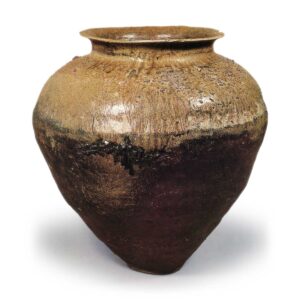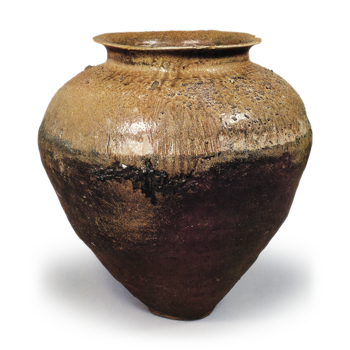
Excavated from the site of Nishi Shiinokiyama Kiln, Itayama-cho, Handa-shi, Aichi
12th century
Height 61.5cm, mouth diameter 34.6cm, body diameter 52.5cm, bottom diameter 12.3cm
Tokoname City Ceramic Research Institute
This is the largest jar from Tokoname of the Heian period that has survived as a complete vessel. The sharp edges of the outer rim indicate that it belongs to the archaic jar group, but the overhang at the junction of the shoulder and body and the small size of the bottom suggest that it dates to the latter half of the 12th century. It is made of fine-grained clay with high iron content, and was formed in a four-tiered joint with a two-tiered body, shoulders, and mouth and neck. The firing was extremely good, and the entire surface of the shoulder was covered with a rich yellowish-brown natural glaze, making this simple jar very impressive. There are many cracks along the border between the shoulder and the body.



